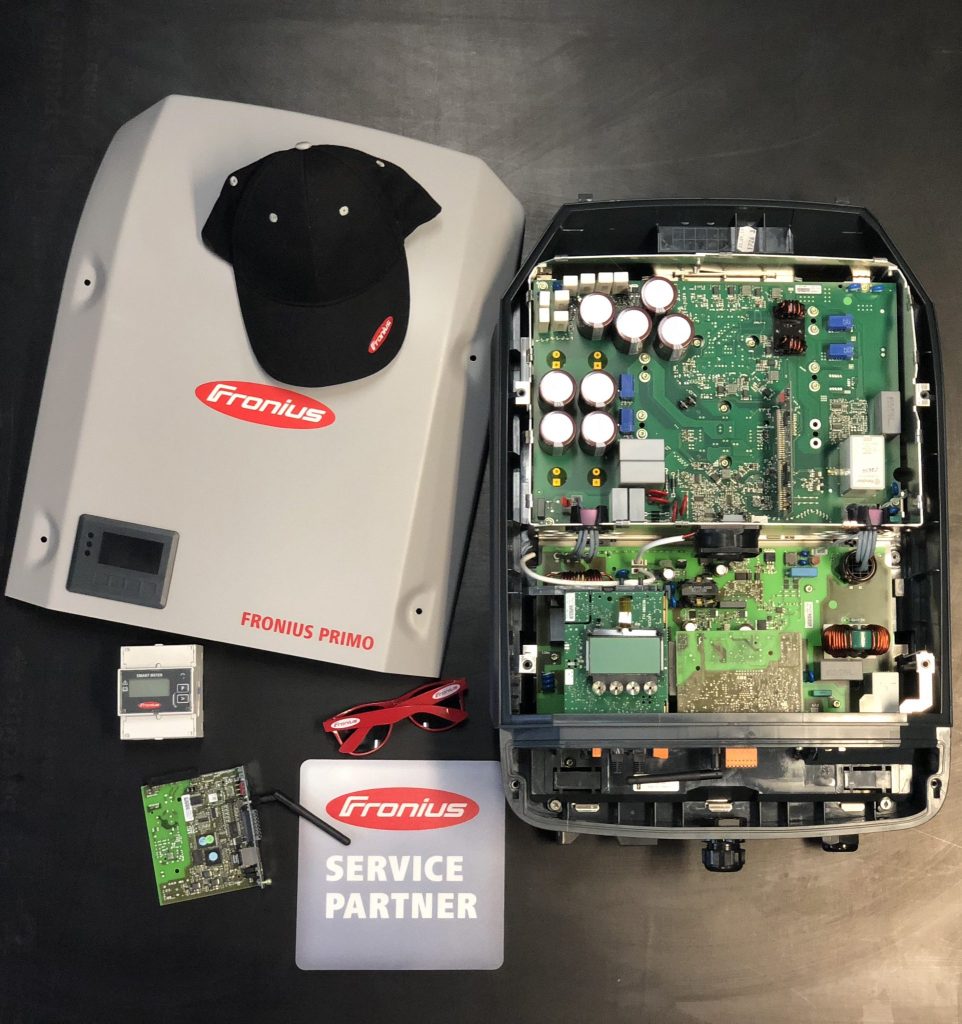 It’s no overstatement to say the Fronius Primo inverter and Fronius Symo inverter has a cult following in the Australian solar market. But does the Fronius Inverter deserve its reputation? Before scrutinising the inverter, we’ll start with a brief history of the company Fronius. We’ll then have a glimpse at the mothership, Fronius International, and I’ll introduce the Fronius Australia team.
It’s no overstatement to say the Fronius Primo inverter and Fronius Symo inverter has a cult following in the Australian solar market. But does the Fronius Inverter deserve its reputation? Before scrutinising the inverter, we’ll start with a brief history of the company Fronius. We’ll then have a glimpse at the mothership, Fronius International, and I’ll introduce the Fronius Australia team.
After the fluffy stuff, we’ll look at the design of the Fronius Snap Inverter series. We’ll look under the hood of the Fronius Primo, and I’ll reveal our failure rate. I’ll then explain why a Fronius Primo SC is actually the good old Fronius ‘International’ with a fancy name. We’ll discuss the limitations of some of the Symo inverters, and we’ll wrap it up by looking at Fronius Solar Web and the Fronius Smart Meter.
About The Company
Günter Fronius
Günter Fronius started Fronius in 1945 – the same year World War 2 ended. He began by building battery car chargers in his family home in Rankleiten, Austria. In 1950 he applied his DC to AC conversion expertise to manufacture welding transformers. In the 1980’s he handed the business over to his children, Bridget and Klaus, who drove the vision of Fronius internationally.
- In 1992, Fronius introduced a third division, Solar Energy.
- In 2001, they made the now infamous Fronius IG inverter.
- In 2014, they made amends for their IG inverter mishap and brought out the Fronius Primo and Fronius Symo inverters.
That’s how it all began.
Fronius International
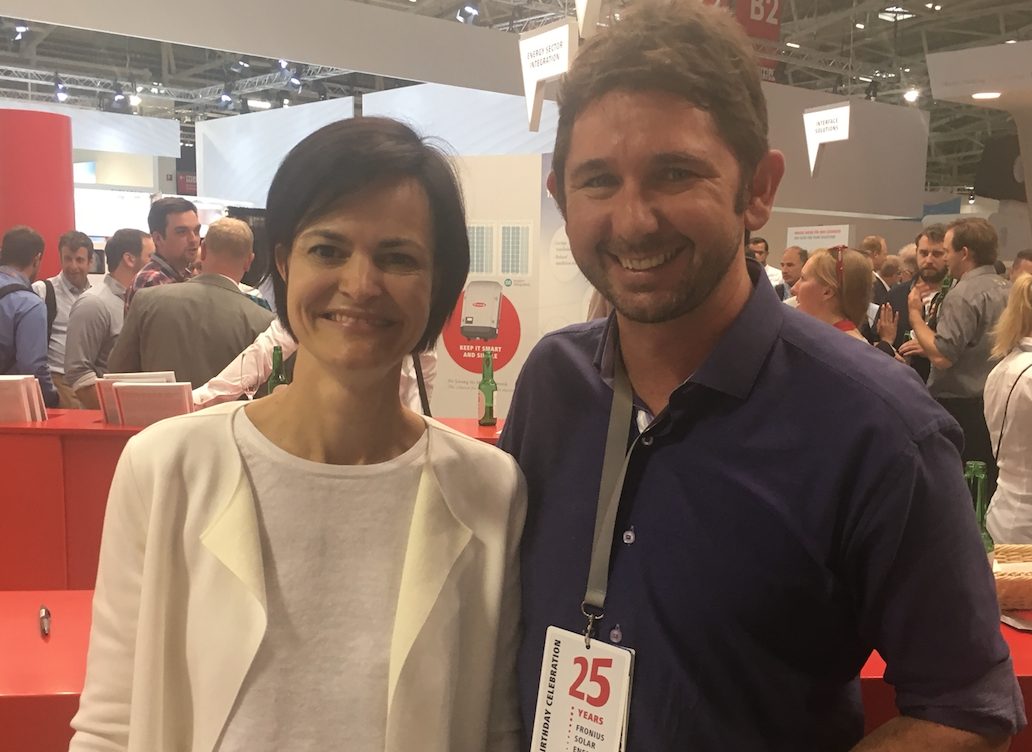
Although the company now has a huge international presence, it has kept its family business feel thanks to the warm and wise leadership of Mrs Strauss. Fronius radiates a positive, professional and friendly atmosphere.
Fronius perfectionism
The tour of Fronius Austria was impressive. Having previously lived in Austria I am acutely aware that Austrians are prudent and orderly people who respect perfectionism. This is interesting if not intimidating to witness in the day-to-day life, but to see this translate into a large-scale Research and Development Facility and Manufacturing Plant was mind-blowing. Understandably, photographs from inside the facility were not permitted. But I can share a glimpse into how impressive the facility is by sharing one of their marketing videos.
Before I visited Fronius International, I assumed these promotional videos were cleverly imagined and fabricated marketing material. Apart from the golden British voice-over and the slow-motion strutting, it is a close reflection of reality at Fronius Research and Development.
Fronius Australia
If the culture of a business is a barometer of its longevity, then Fronius Australia is here to stay. I’ve had the privilege of travelling and working with many of the key Fronius Australia staff over the last few years. Keshia, Adrian, Rod, Bella, Balaji, Sebastian, and the new player in Brisbane, Matthew, to name a few. They stand apart from their competitors. You can tell they love working for Fronius and were picked for their passion and knowledge of the industry. It’s always a pleasure having a meeting or a beer with any of them.
So an Austrian family business starts out in the dust of World War II and builds an international empire with amazing company culture and a hunger for perfection. The fluffy stuff sounds A-OK. But is the inverter any good?
Snap Inverter
The Fronius Snap Inverter (as it is cleverly and uncommonly called) is smart and sleek. You can’t say that about every inverter. To comply with Australian & New Zealand Standards, Fronius integrates the DC Isolator onto the backplate so we don’t have to install another DC isolator beside the inverter. The integrated DC isolator not only saves on installation time and material cost, but it also makes the installation neater (ignore the conduits all over my test wall). The inverter then “snaps in” to the back plate. Shmicko. Easy and good-looking install. Everyone is happy.
Update – These days it’s fairly common for an inverter to have a built-in DC isolator. Fronius, however, was the leader of that pack.
 Fronius Inverter Internal Build
Fronius Inverter Internal Build
The Fronius inverter is an obvious product of an anally retentive production line manager. I’ve pulled apart a few inverters in my time, and I don’t think it’s just my bias that says the Fronius inverter is the neatest. You don’t get the silicone-like goop smeared all over inverters, and all wiring is neatly loomed.
I watched the assembly process when I visited the factory in Austria. It was impressive how each one was assembled by the hands of attentive Austrians who didn’t look to be in a rush.
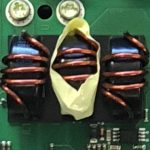
Yeah, that’s the best I’ve got.
Fan Cooling
The 12 amp Fronius Primos have one external fan, while the 18 amp versions have two. All Fronius inverters also have an internal fan. High temperatures shorten the life of electronics, particularly electrolytic capacitors, so it is vital to keep inverters cool.
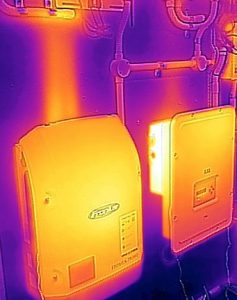
Warranty Claims
In reality, every electronic device has a failure rate. In the solar industry, a failure of less than 1% is acceptable. Fronius don’t tell us specifics on their failure rate, but they aim for less than .5% and say they reach that target with most of their products. All products are under 1%.
But let’s not take their word for it. After installing about 1600 Fronius inverters in three years here are our approximate failures:
Dead on Arrivals (DOA):
- Inverters DOA: 4 out of 1600 or .25 per cent
- Smart Meters DOA: This is mainly screws stripping in the terminals. 12 out of 1030 or 1.7 per cent.
- Data Manager Cards DOA: 4 out of 1600 or 0.25 %
If you added all the DOA issues together, we have 20 jobs with some kind of DOA. Or a whopping 1.25% of jobs. However, DOAs are just an annoyance to the electrician on the day of installation – it does not affect the system’s uptime.
Failure after installs
- Inverters failure after installation: 5 out of 1600 or 0.31%.
- Data Manager Cards after installation: 3 out of 1600 or 0.18%
- Smart Meter failure after installation: 3 out of 1030 or 0.29%
If you added all the failures together, we have had 0.68% of jobs that we have had to return to. But again, Data manager Card and Smart Meter Failures do not affect system uptime.
The all-important failure rate that affects uptime is just the inverter failures after installation, which is 0.31%.
The Fronius Primo Inverter Power Stack
The power stack is where the DC to AC conversion happens. It’s what replaced the transformer in old inverters to make inverters transformerless. The Fronius power stack uses H5 Bridge technology (a technology that SMA introduced into the market) which switches five transistors (in the form of an “H”) to chop up the DC into a 230v AC output. Fronius uses two different power stacks for their Primo inverters.
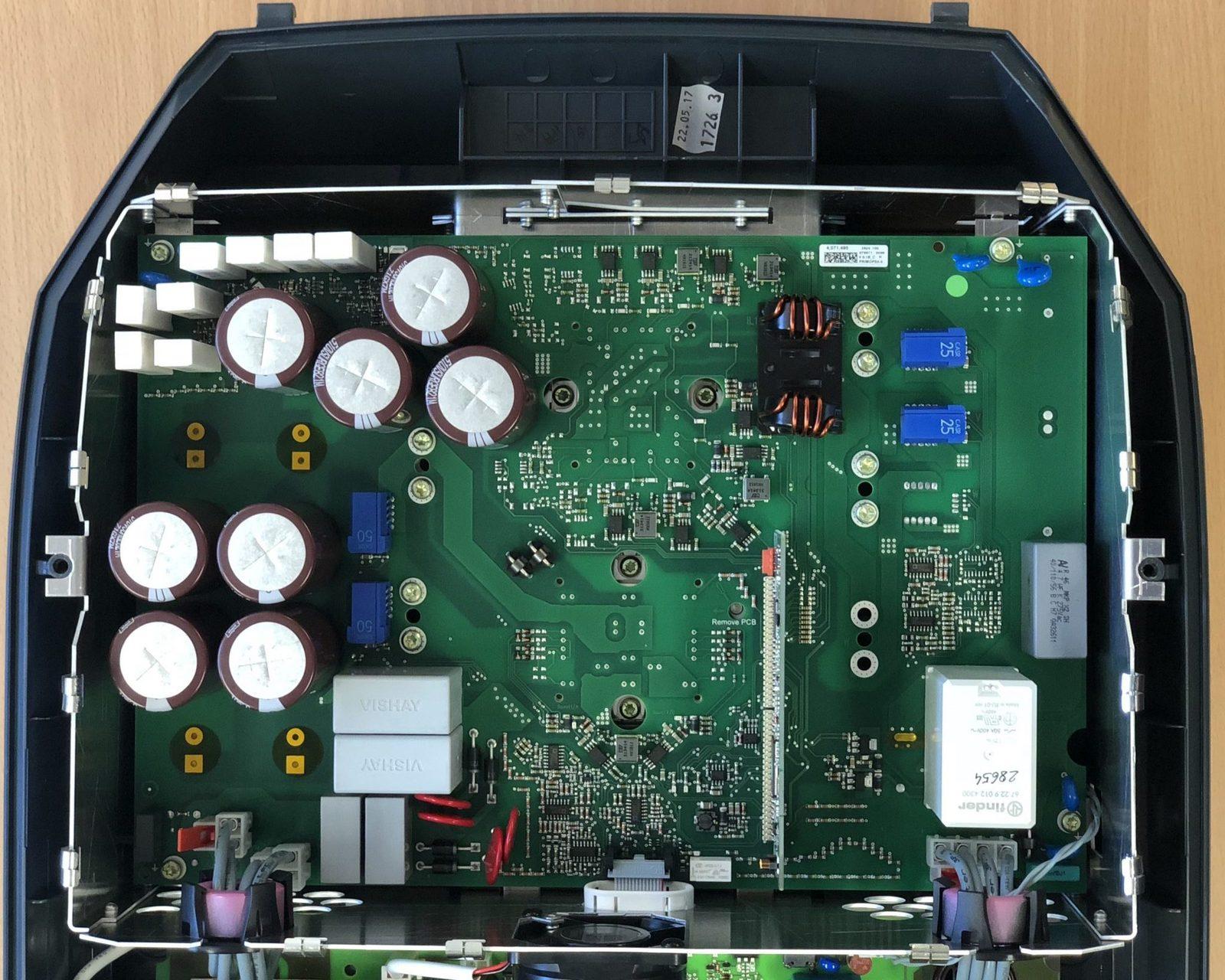
The smaller power stack is only capable of handling 12 amps per input and is used in the Primo 3.0, Primo 4 and Primo 5.0 (otherwise known as the Fronius “International.”)
The 12 amp power stack has fewer electrolytic capacitors, inductors, transducers and film capacitors. Because it is only rated to 12 amps, it means (at least on paper), we can not put 2 strings (or groups) of panels into 1 input. This isn’t an issue with smaller inverters when we only used 16 panels, but it becomes restrictive when we want to install 24 panels on the Primo 5 International.
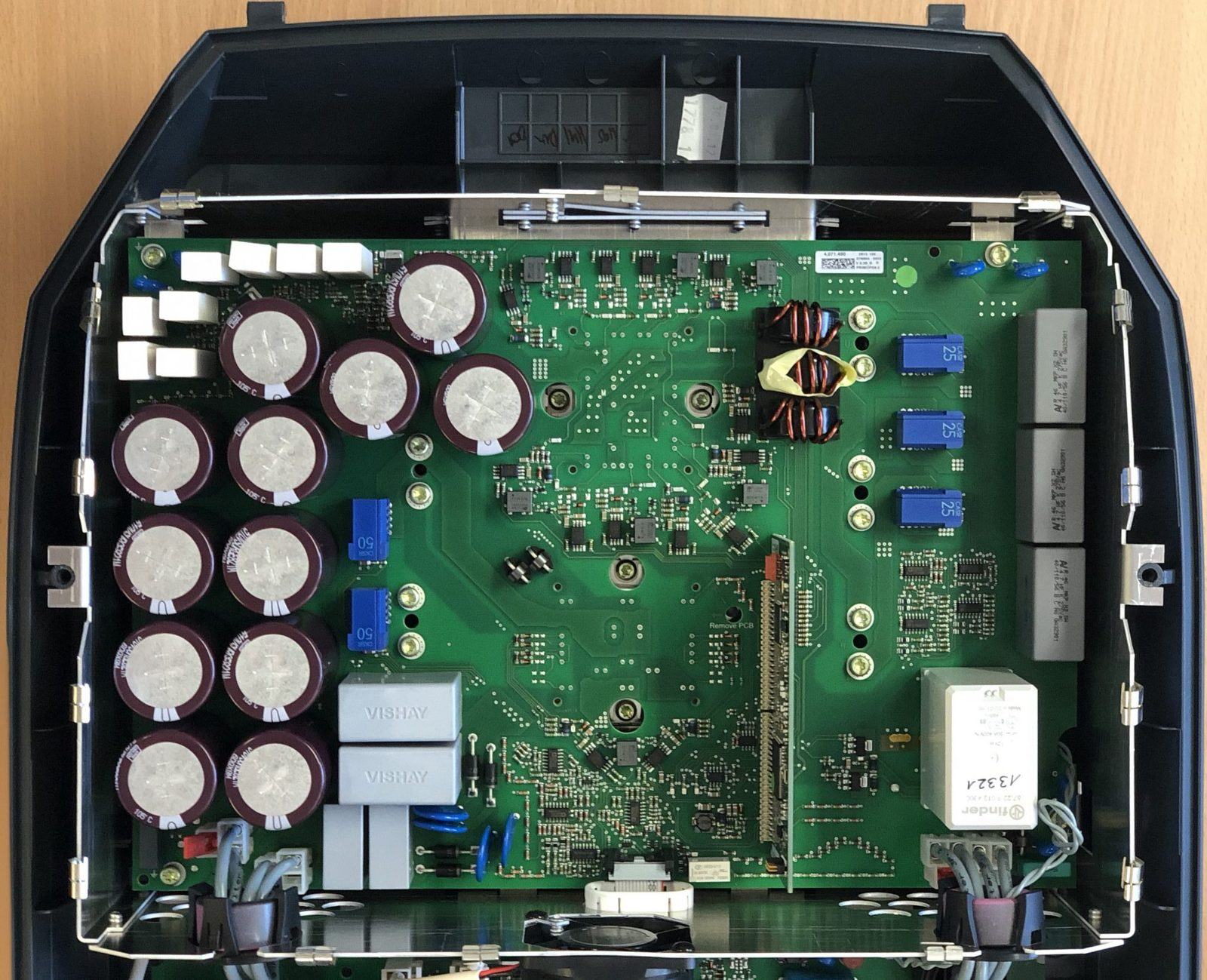
When we install more panels, we need a higher current so we can install 2 strings of panels into 1 input. The 18 amp power stack is used in the Primo 5.0 AU, the Primo 6, and the Primo 8.2.
The Primo 5.0 AUS has a nominal output of 4.6kW. It was introduced to Australia because, in some parts of Australia, red tape limited the size of an inverter to 4.6kW. CEC guidelines state we can only install 33% more panels than the nameplate of the inverter so the Fronius 5.0 AUS is limited to 6.1kW of panels.
The Fronius “International” Inverter
In parts of Australia that allowed a full 5kW inverter, the 5kW Fronius International became popular because it meant we could install 6.6kW of panels. (The Fronius 5.0-1 is not technically called the “Fronius International”, that’s just the name the industry adopted to differentiate it from the Fronius 5.0-1 AUS.) A poorly-kept secret was that the Fronius International was actually made with the 18 amp power stack. So while on paper we could not install 2 strings of panels in 1 input, in reality, we could. It worked well and it was compliant.
However late last year we got some devastating news. The Fronius International was going to be made as per the spec sheet, with the 12 amp tracker. But the devastation was short-lived. Fronius heard our cry and introduced the new Fronius SC. SC stands for Superior Current. The name is uncharacteristically tacky of Fronius, but we’ll learn to embrace that and for now, we’ll celebrate that we got our baby back. A full 5kW nominal inverter with an 18 amp power stack!
So now we have three different 5kW Fronius Primo inverters:
- The Fronius Primo AUS (18 amp, 4.6kW nominal, 6.1kW input)
- The Fronius Primo “International” (
18 amp12 amps, 5kw nominal, 6.6kW max panels) - The Fronius Primo SC (18 superior amps, 5kW nominal, 6.6kW max panels.)
Fronius Symo Inverter
The Fronius Symo is sometimes not as flexible as we would like. The Fronius Symo 5kW, 6kW, 7kW and 8.2kW inverters are limited to 16 amps. If we want to parallel two strings of standard ≈9 amp panels into 1 MPPT of a Fronius Symo, we can, but with a poor design: we would clip the maximum power of that MPPT input.
Fronius produced a whitepaper that explained that “current oversizing” leads to annual losses of less than .75 per cent. The problem is, that study was done in Munich, which sees even less sunshine than a sheep in a paddock on the southernmost tip of New Zealand. However, I figured I could adapt the logic in sunny Brisbane with a few tweaks:
- If we parallel 9.3 amp panels east and west, the panels wouldn’t max out at the same time, so they would be less likely to reach 16 amps.
- If we are oversizing the inverter by 33%, the current would only be limited when the power is limited.
Because of my flawed logic, a few of our solar 8.2kW Fronius Symo systems went out with a parallel string design. When we looked back into the Fronius SolarWeb monitoring we found this:
The problem with my logic was this:
- Even east-west paralleled strings in Brisbane would come close to their specified operating current at the same time, and,
- We normally did not significantly oversize 6, 7 or 8.2kW inverters, because we could instead just use the bigger inverter.
For the record, we rectified our mistake by simply replacing the 8.2kW Symo inverters with 10kW Symos.
The Fronius Screen
The Fronius SnapInverter may be one of the last inverters to have a screen. Most manufacturers are moving away from using inbuilt screens because of reliability issues. Instead, they are heading to online monitoring or connecting directly via your smartphone. I prefer a screen as a backup because passwords will be forgotten and it could complicate what could have otherwise been simple troubleshooting. However, in the ideal world, every inverter would be monitored online.
Fronius Solar Web
Fronius Solar Web (www.solarweb.com) is the Fronius online monitoring platform. It’s a poor reflection of the solar industry that less than 50% of Fronius inverters were ever connected to SolarWeb. Shame on you cheap-arse sales companies for delivering a half-arsed install. Connection to Solar Web should be essential. If you have a Fronius inverter that was never connected to Solar Web, an earth-fault alarm may need to be installed to meet CEC regulations. Chances are, that didn’t happen. So call your installer and give ’em what for.
Connection to Fronius Solar Web gives you an easily navigated phone app or a web browser so you can see:
- Instantaneous solar production
- Instantaneous household consumption (if you install the Smart Meter)
- Day, Month, Year, and Total production data in a simple and clear format.
- Overlaid historical consumption if you install the Smart Meter.
Fronius also goes much deeper for the installer with:
- Historical AC voltages on each phase
- Historical DC voltages on each tracker
- Historical DC current on each tracker
- Historical AC current
Having the ability to diagnose issues like high grid voltages or seasonal shading, or even just the ability to confirm panel stringing, is a huge advantage for both us and our customers.
A simple hack of the Fronius Solar Web is that you can currently get the Premium version for free. When you are logged into your Fronius Solar Web account, sign in as if you are going to pay, but when it asks you for payment, the balance owed is zero. Once signed up for premium, your historical data is extended from 3 days to unlimited. This may change in the future to require payment, but for now, it’s completely free.
Update – Premium is no longer free, but since “Solar Web” is the best monitoring platform around. The subscription to “Premium” represents fantastic value for money in my opinion.
The Future of Solar Web
From my bias, Fronius offers the best monitoring of any inverter. But in keeping with their “shifting the limits” motto their pending revamp will include:
- The ability to compare what your system is producing to what your system should be producing using seasonal data and current weather data.
- A battery sizing tool.
- Multiple Smart Meter monitoring so we can monitor your new Fronius and your existing inverter on the same platform. And for the “Jack Longy Longs” of this world who want to monitor everything.
- Sorting abilities for companies with thousands of installs.
- A simpler way to work out your electricity bill over specific dates – keeping your energy retailer honest!
Fronius Smart Meter
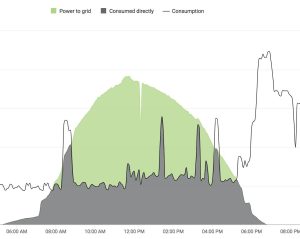
All you have to do is open the Fronius Solar Web app or log in to Solar Web online. I explain more about the Fronius Smart meter in this post.
It should be noted that you only get a 2-year warranty on the Fronius Smart Meter, and Fronius do not manufacture it themselves, which kind of takes the shine off it.
 Conclusion
Conclusion
If I didn’t make it clear, I’m a Fronius fanboy, but for good reason. Fronius has a solid history and an impressive Austrian manufacturing facility. The Australian team reflects the culture that Gunter Fronius began and his granddaughter continues. Austrian perfectionism shines through in the build of their inverter. If needed to find fault, you could speculate that external fans, inbuilt screens, and Smart Meters may have issues in the future, but after seeing how Fronius does their accelerated testing, I think we’re pretty safe with the fans and screens. The Fronius Primo lines up every version you would want, crowned by the versatile 5kW Primo SC. While the smaller Fronius Symo can be restrictive, those restrictions can be overcome by using a 10kW Fronius Symo. Fronius Solar Web is the best and getting better, and the smart meter is the icing on the cake.
Update – Fronius has released a new series of inverters, The “Gen24” and the “Gen24 PLUS” You can read my review of the Gen24 PLUS here. These new inverters have some really cool features and if I was installing solar at my house today, this is the inverter I would be using.
If you are looking for a quality solar system in South East Qld, contact us.


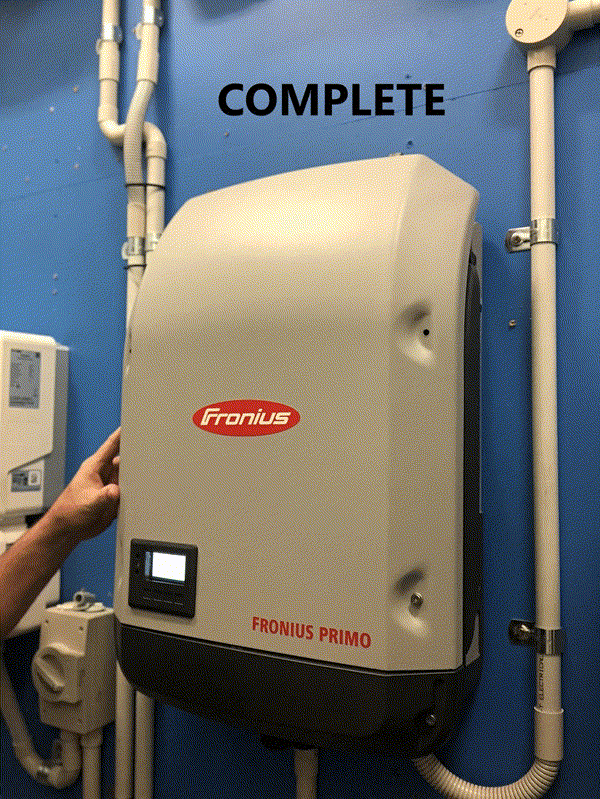
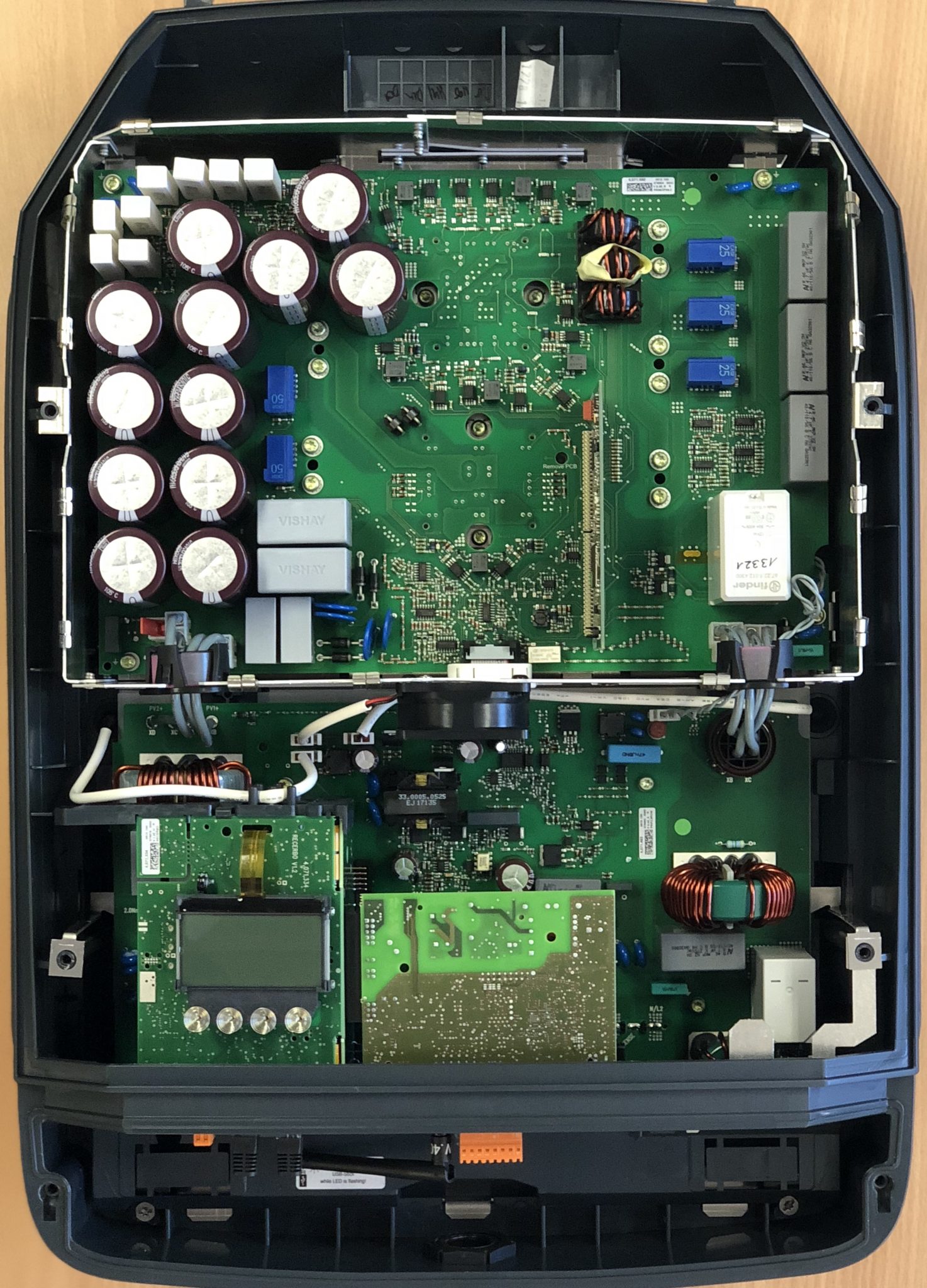 Fronius Inverter Internal Build
Fronius Inverter Internal Build
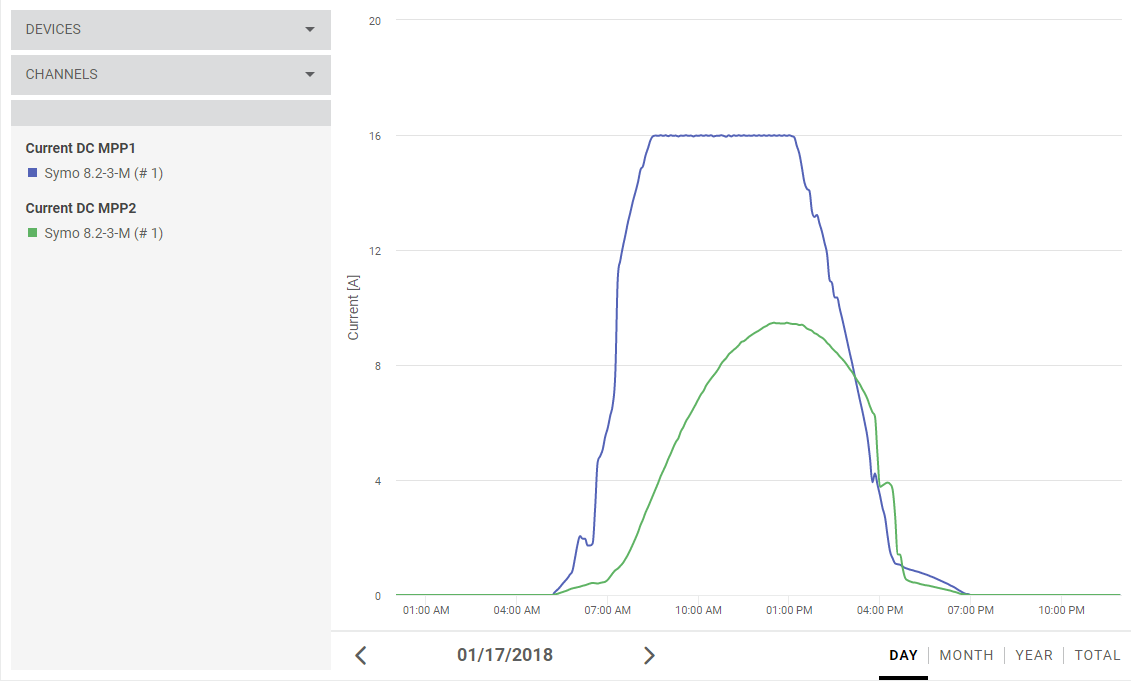
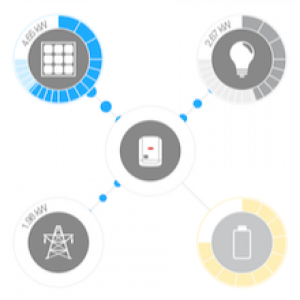
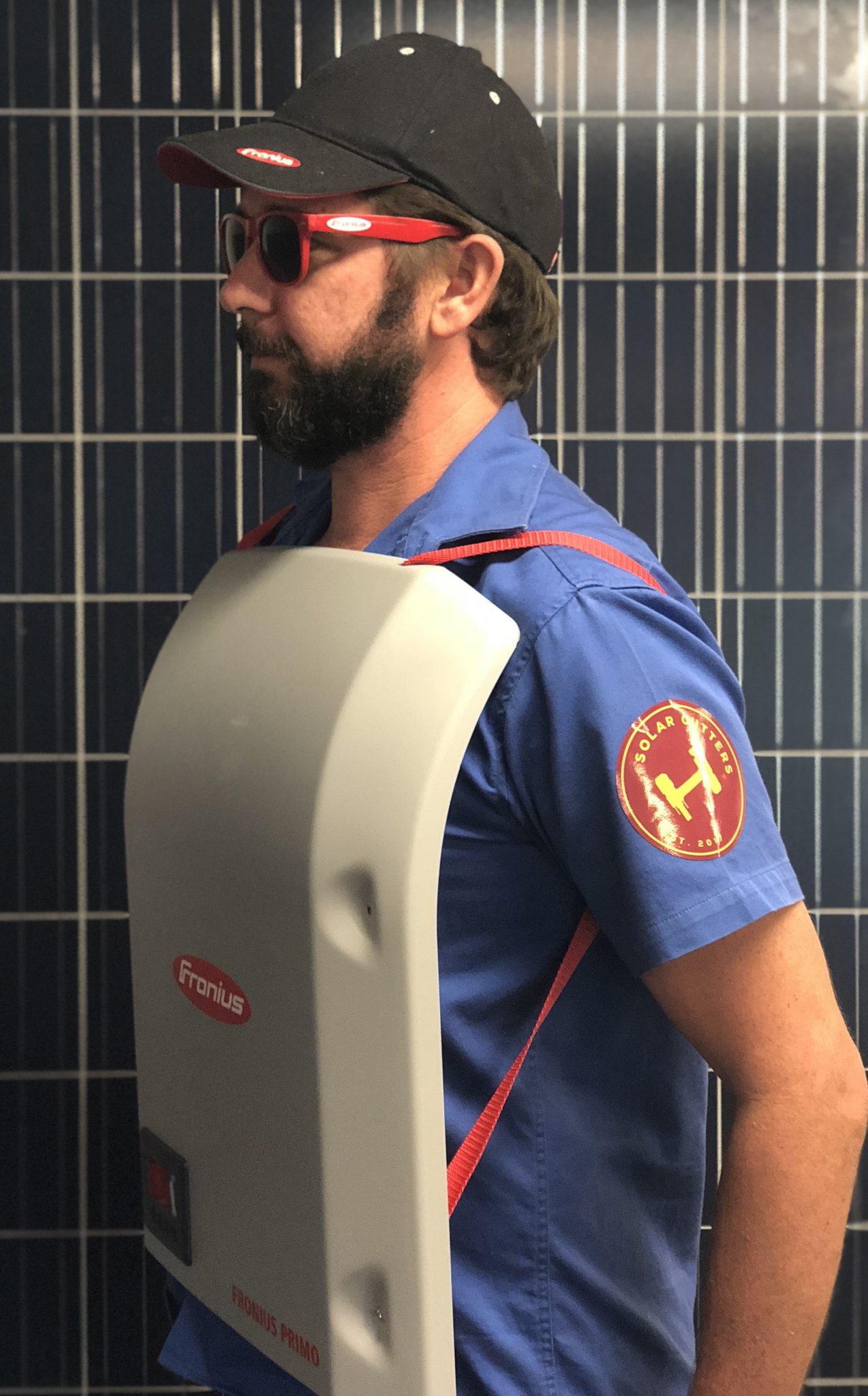 Conclusion
Conclusion







6 Responses
Hi Stephen, yes an inverter shield designed with ventilation could help reduce the noise.
Hi, I have a Fronius Symo 10Kw inverter. It gets quite noisy in the day. I was wondering if there’s anything you’d recommend to reduce the noise a bit? (apart from replacement with a different model or moving it). I build my own PCs and I know there’s a big difference in fan quality and that some fans are much quieter than others. I was wondering if the Symo fans are a standard size and if they could be swapped out for some premium fans that might be a little quieter? I was also considering installing a large inverter cover (large for better airflow) and covering with MLV (mass-loaded-vinyl) or a similar matierial to help reduce the noise. I don’t mean covering completely, but still leaving gaps for ventilation. Any ideas are welcome.
Hi Martin. The answer to that is dependant on which model of Fronius inverter and which solar panels you’re using. It is definitely possible if the right combination is used.
Hi, I would like to know how many solar arrays can be connected to a Fronius single phase inverter (5kw). I want to put 3 Arrays onto the roof to optimize the hrs of sun impact. Thank you Martin
Hi Geoff. If you have a 10kW inverter it will only get to 10kW (or maybe about 10.2kW?) regardless of how many panels you have installed.
Hi, I have a Symo 10kw system fed by a 13kw solar array. I am trying to understand the output. If my system is producing 12kw and I am consuming 2kw does that mean I am still exporting 10kw? If so can I increase my 10kw export limit?